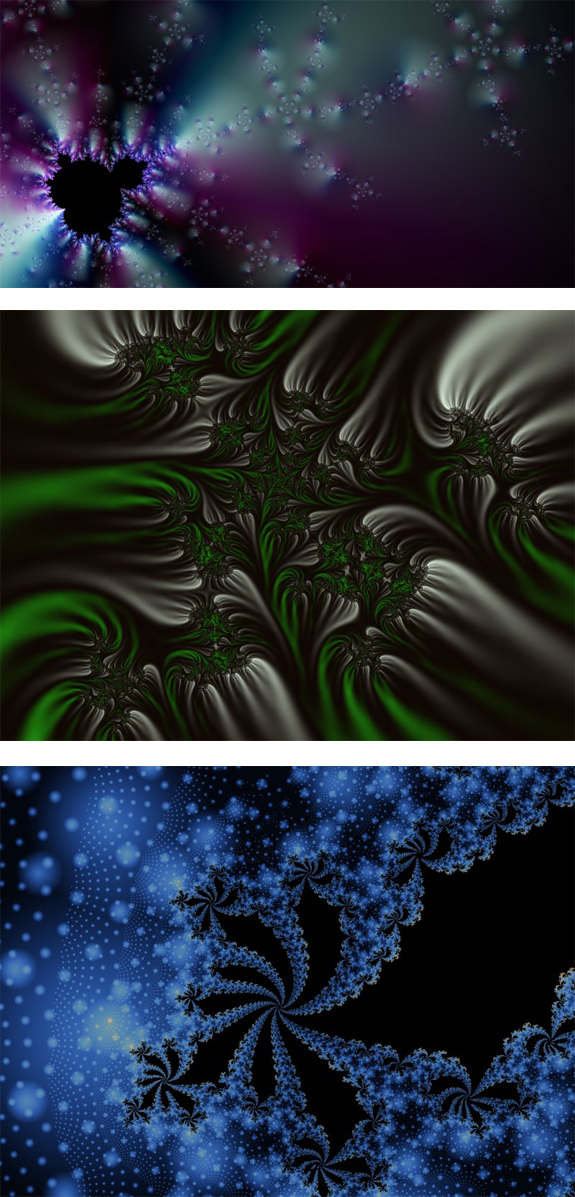

However, most of these statistical parameters, like R a, R q for 2D profiles and S a, S q for 3D surfaces, unfortunately, are heavily dependent on the practical measurement conditions (e.g., the resolution of measurement instruments), and are easily affected by the evaluation uncertainty, frequency-based errors, and measurement noise.
ULTRA FRACTAL FORMULAS SERIES
To evaluate the machined surface morphologies, the traditional method is to use a series of statistical parameters of the surface contours, represented by the surface roughness. The surface morphologies of the machined parts have a direct and significant effect on their ultimate service performance, especially for the optics components working with high-power lasers like KDP crystal.

Thus, it is significant to carry out a comprehensive evaluation of the repaired KDP surface morphologies. One challenge is that as KDP optics are soft and brittle, brittle cracks are quite easily involved in micro-milling processes, deteriorating the machined surfaces, which might shorten the service performance and life of the repaired KDP optics. However, there are some important issues that urgently need in-depth investigation before performing this micro-milling repair approach into the actual engineering application in ICF facilities. Currently, the most flexible method is micro ball-end milling to achieve this objective. In order to recycle and use these valuable KDP optics, the most cost-efficient way is to repair the damaged defects as quickly as possible to avoid them further growing to scrap the entire optics. While working under continuous laser irradiation, laser-induced damage defects (e.g., micro-cracks and micro pits ) are vulnerable to generate on the KDP surfaces, thus restricting the sustainable operations of inertial confinement fusion (ICF). Potassium dihydrogen phosphate (KDP) crystals, known as an excellent non-linear optical material, have been widely adopted to generate harmonics for Nd: YAG laser systems. This fractal analysis would facilitate the accurate and efficient evaluation of the repaired KDP optics by micro-milling. However, once the 2D F D is distributed asymmetrically and the anisotropy becomes weaker, the assessed surface contours would be occupied by brittle cracks and fractures, and corresponding machining processes will be in a brittle regime. Normally, there is obvious symmetry of 2D F D and anisotropy on the micro ball-end milled surfaces generated by ductile-regime machining. The circumferential 2D F D could quantitively characterize the anisotropy of micro-milled surfaces, which could not be analyzed by surface roughness. The 3D F D is identified to have a negative correlation with surface roughness ( S a and S q), meaning the worse the surface quality the smaller the F D. The 3D and 2D fractal dimensions of the machined surfaces and their typical cross-sectional contours have been calculated, respectively, based on Box-counting methods, and were further discussed comprehensively by combining the analysis of surface quality and textures. In this study, the fractal dimension ( F D) was introduced to characterize the surface morphologies of soft-brittle KDP crystals machined by micro bell-end milling. To achieve this objective, it is of great significance to explore new evaluation methods to further characterize machined surface morphologies. To estimate machined surface morphologies, the conventional method is surface roughness, but it fails to distinguish ductile-regime machining from brittle-regime machining directly. The micro-defects on KH 2PO 4 (KDP) optic surfaces are mainly repaired by the micro-milling technique, while it is very easy to introduce brittle cracks on repaired surfaces, as KDP is soft and brittle.


 0 kommentar(er)
0 kommentar(er)
